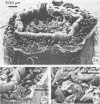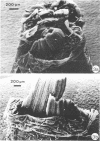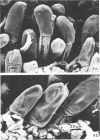Abstract
Pieces of lucerne stem suspended in a sheep rumen in nylon bags were removed after different time intervals and examined by scanning electron microscopy. By 15 min large numbers of the ciliate protozoan Epidinium Crawley were attached to damaged areas of the stem, although a complex protozoal fauna was present in the rumen contents. Highest concentrations were on cortex and phloem tissues, with densely packed protozoa forming a complete ring around the transversely cut end of the stem between the epidermis and the vascular cylinder. Within 2 h there was extensive degradation of thin-walled tissues, as indicated by the amount of exposed vascular cylinder. Epidermis was not degraded but slid down the side of the stem as the underlying tissues were removed. This rapid degradation of plant tissue is explained by direct ingestion of tissues by the protozoa on the plant fragments. Many of the epidinia attached to the stem pieces were ingesting phloem elements and chlorophyllous tissue. The rumen protozoa have not previously been shown to participate on this scale in the physical degradation of plant material.
Full text
PDF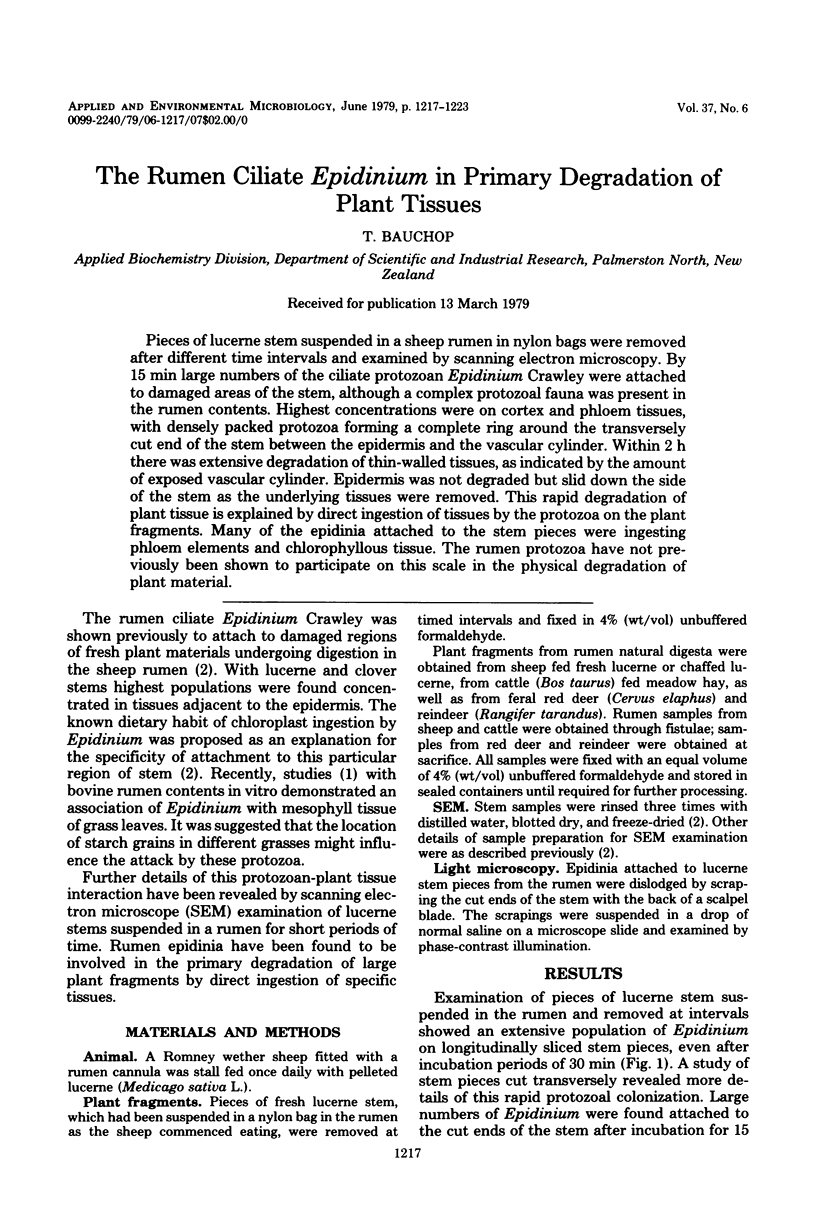
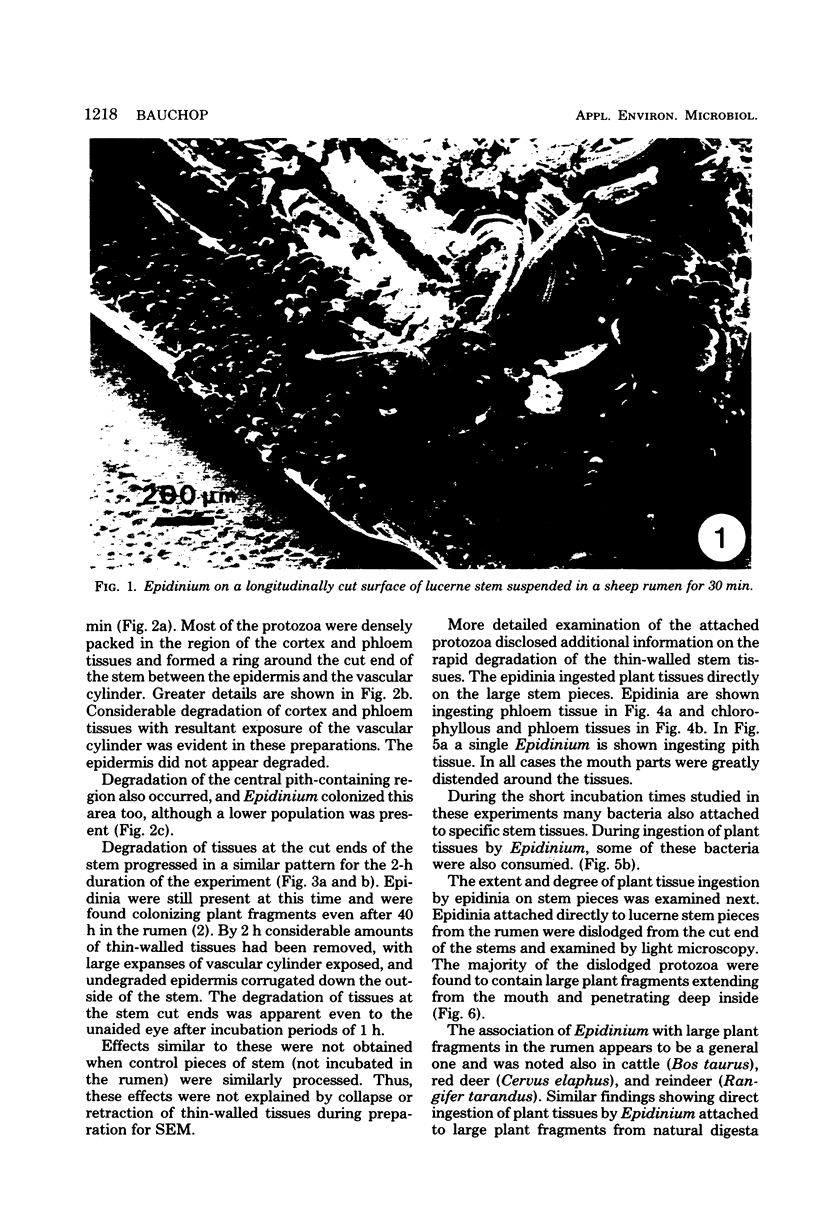
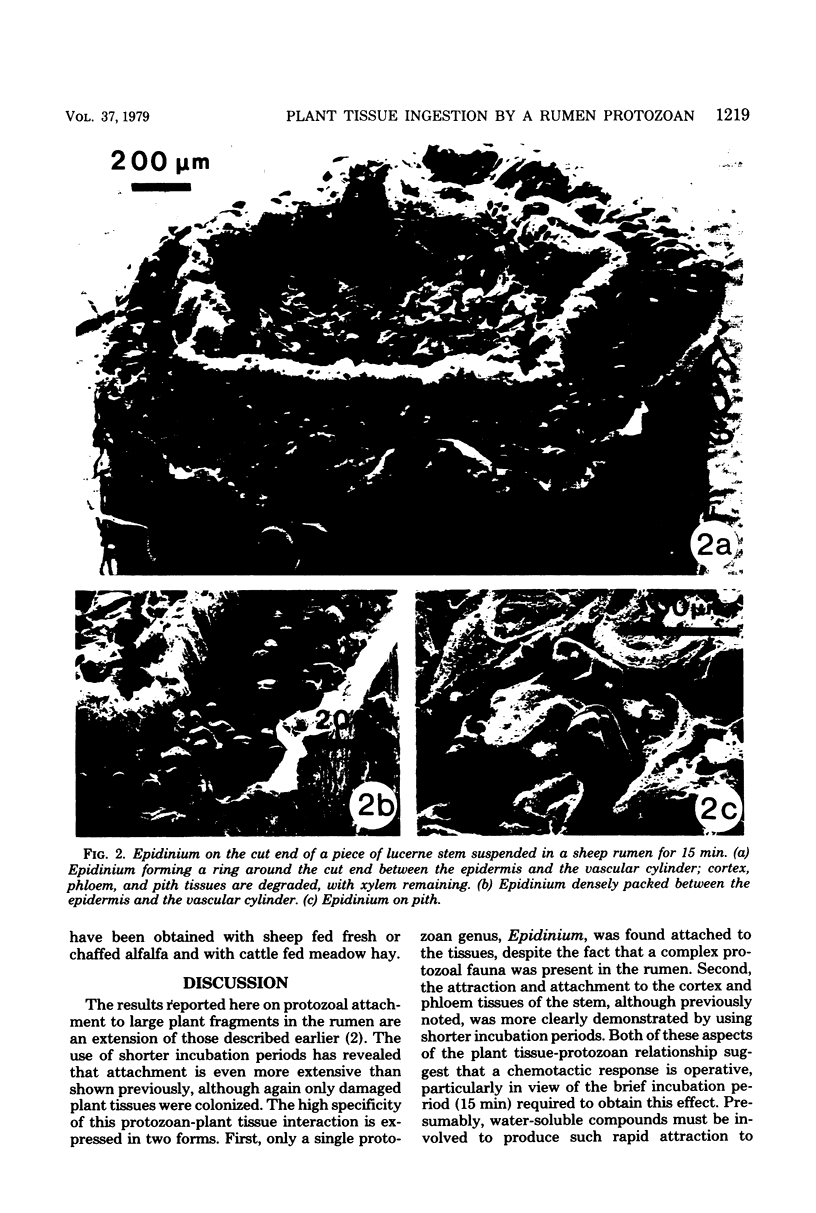
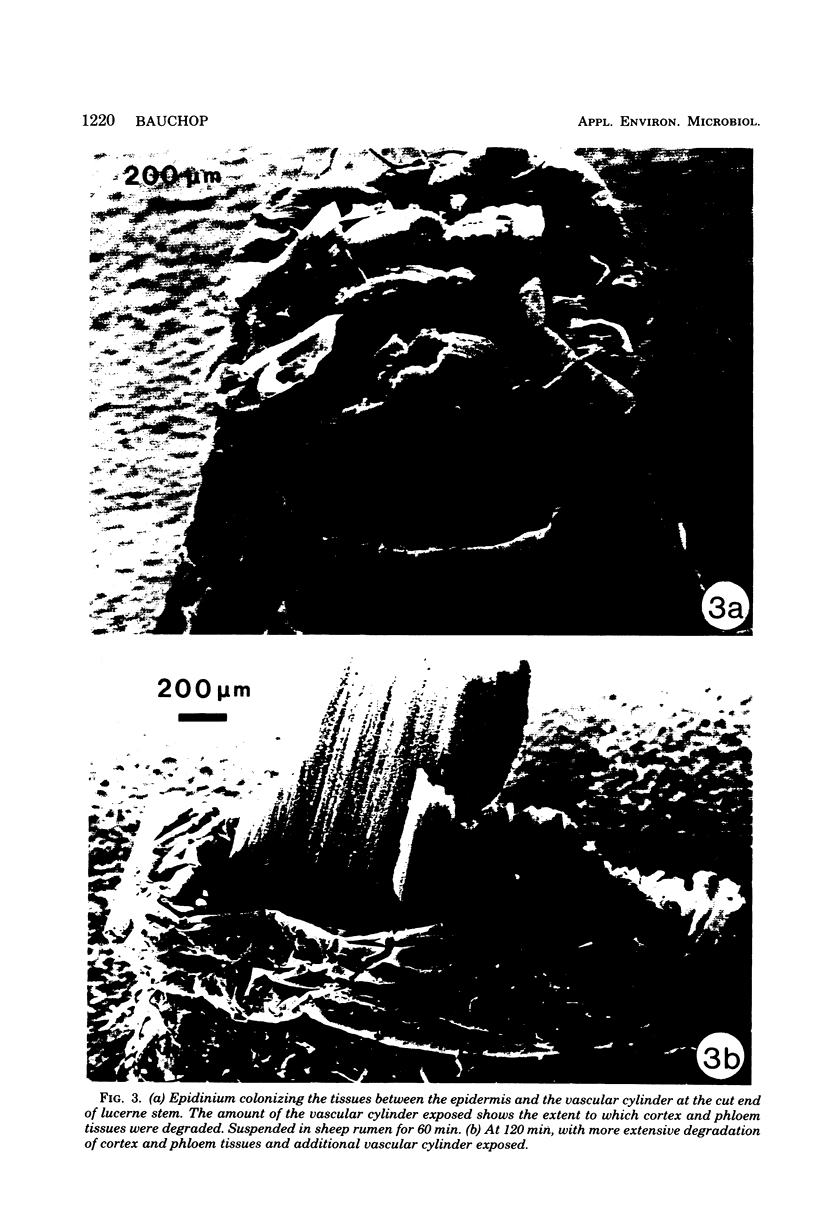
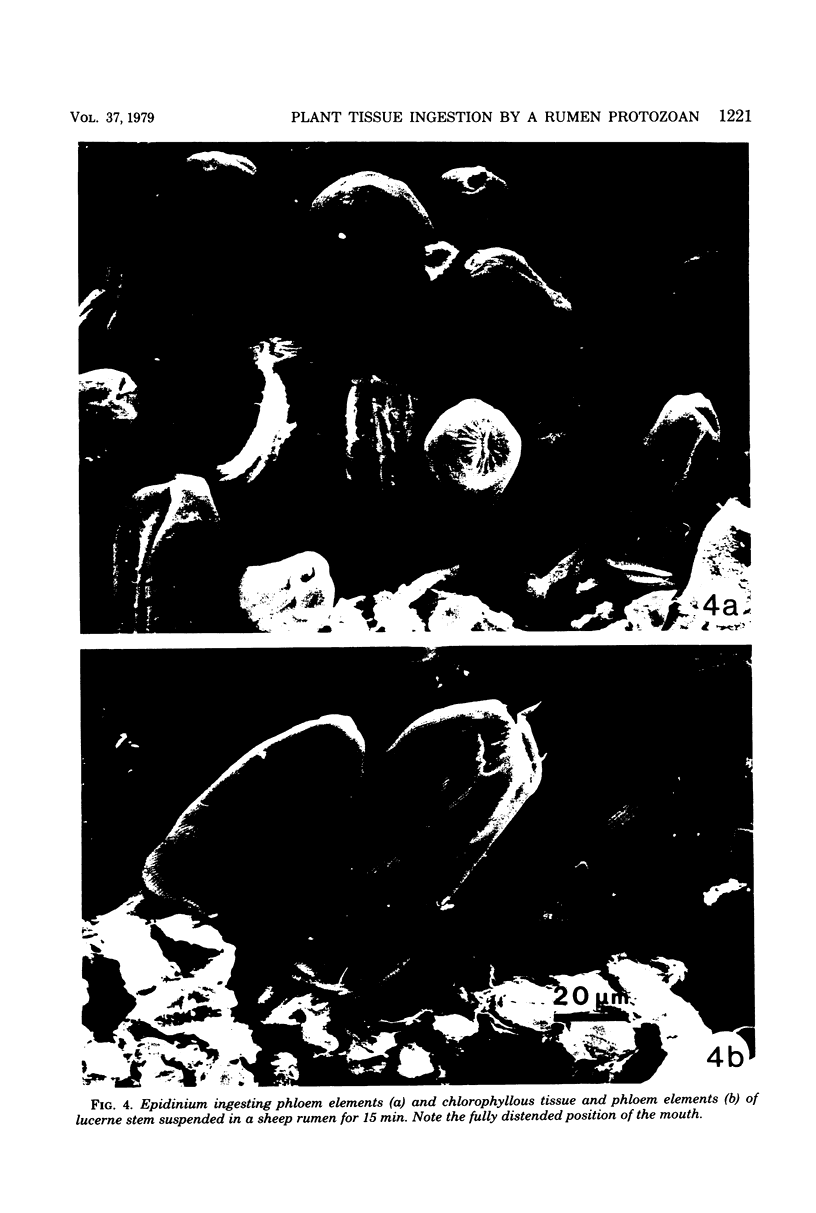
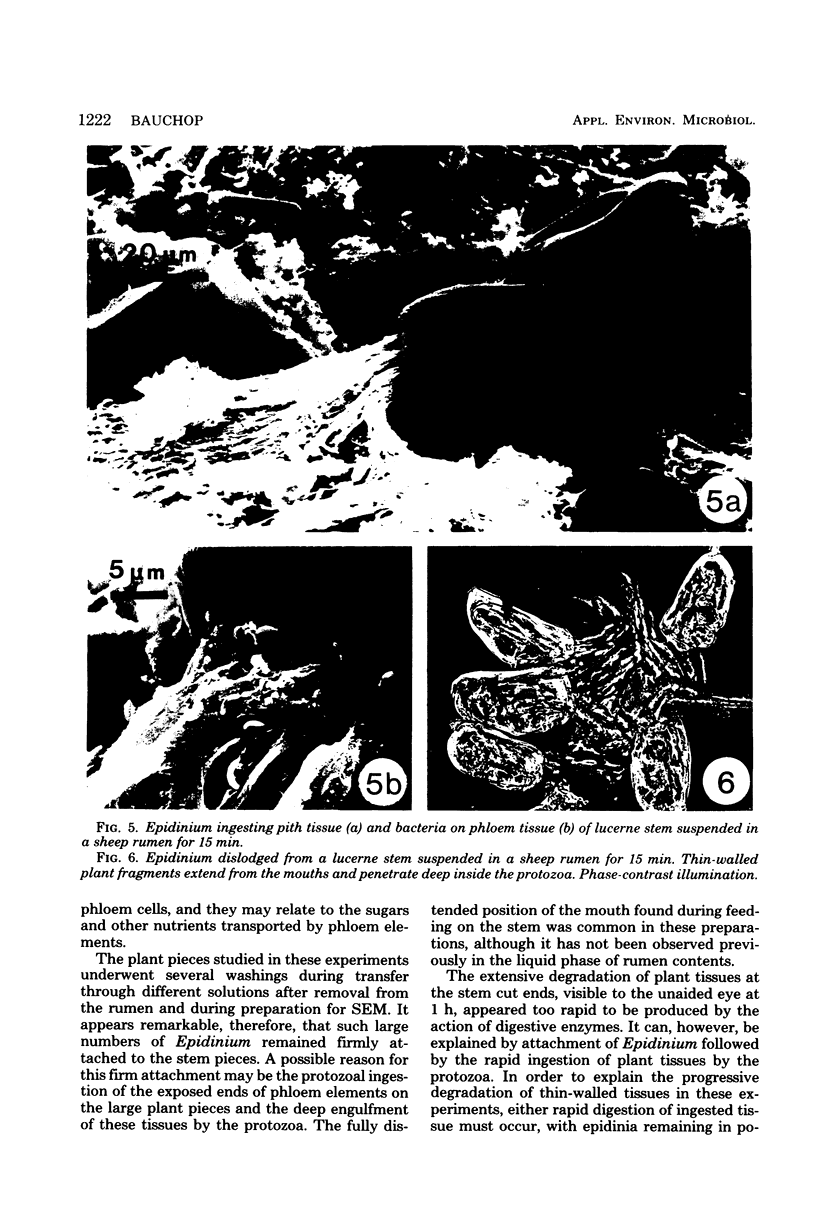
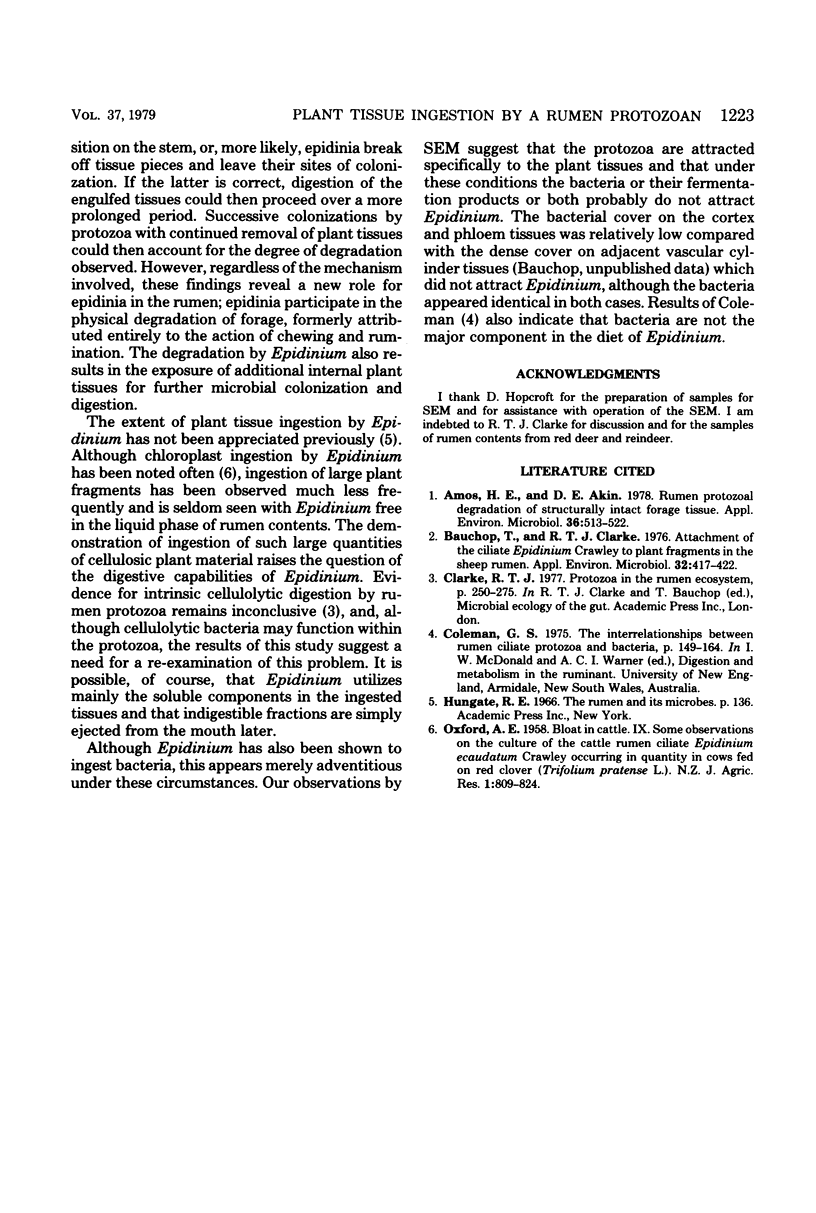
Images in this article
Selected References
These references are in PubMed. This may not be the complete list of references from this article.
- Amos H. E., Akin D. E. Rumen protozoal degradation of structurally intact forage tissues. Appl Environ Microbiol. 1978 Sep;36(3):513–522. doi: 10.1128/aem.36.3.513-522.1978. [DOI] [PMC free article] [PubMed] [Google Scholar]
- Bauchop T., Clarke R. T. Attachment of the ciliate Epidinium Crawley to plant fragments in the sheep rumen. Appl Environ Microbiol. 1976 Sep;32(3):417–422. doi: 10.1128/aem.32.3.417-422.1976. [DOI] [PMC free article] [PubMed] [Google Scholar]




